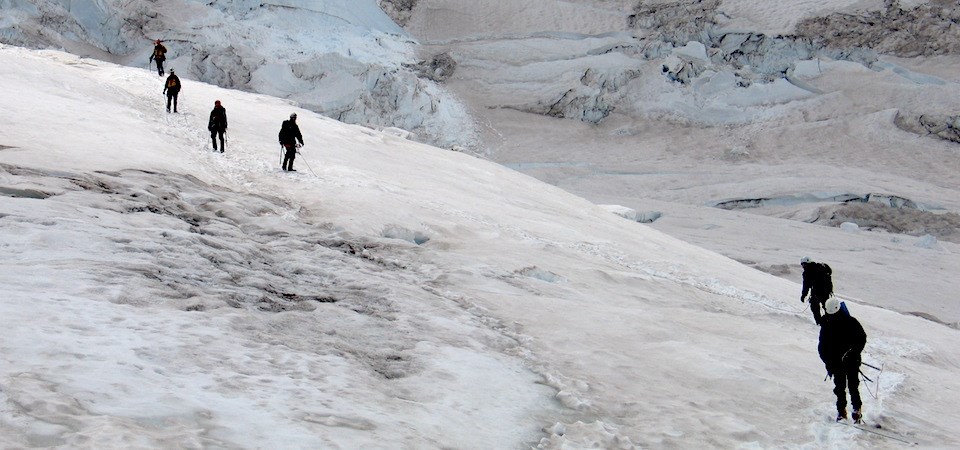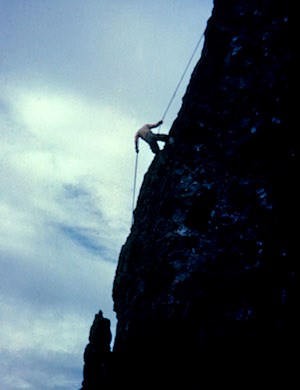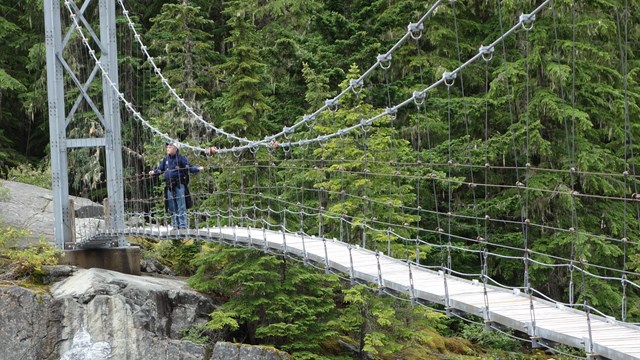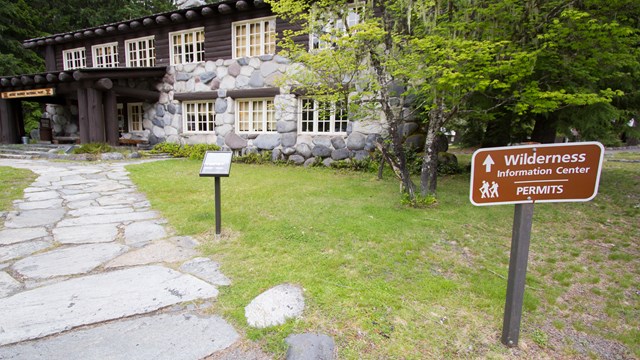
NPS Photo Mount Rainier, the most heavily glaciated peak in the contiguous United States, offers an exciting challenge to the mountaineer. Each year thousands of people successfully climb this 14,410 foot active volcano. There is access to over twenty different climbing routes and ski descents via four main trailheads to approach the mountain: Paradise, Westside Road, White River, and Mowich Lake. Reaching the summit via any route requires a vertical elevation gain of more than 9,000 feet and traveling over ten miles in distance. Climbers must be in excellent physical condition and well prepared. Technical glacier-travel rope skills are also required to ascend and descend the mountain safely. Either independently or with a guide, climbing and skiing on Mount Rainier offers an unparalleled experience within the Pacific Northwest's Cascade Mountain Range. Fees, Permits, and ReservationsTwo things are required to climb Mount Rainier:
About the Annual Climbing Fee: The Annual Climbing Fee at Mount Rainier National Park helps provide for rangers to respond to search and rescue incidents, staff ranger stations and high camps to register climbers and provide up-to-date route conditions, and remove human waste from the mountain and dispose of it properly. Pay the Climbing Fee online through Pay.gov.
Annual Climbing Fee Frequently-Asked-Questions About the Climbing Permit: Climbers must obtain a Climbing Permit in person at a ranger station. Climbers cannot obtain a Climbing Permit over the phone or online. A Climbing Permit is required for each party that skis or climbs on a glacier and/or ascends above 10,000 feet on Mount Rainier. While the Annual Climbing Fee only needs to be purchased once for the entire calendar year, a Climbing Permit is specific to the date range and party to which it is issued. Reservations will be held until noon of the day your permit begins. After noon, your reservation will be cancelled, unless you email morawildernessreservations@nps.gov, or talk to a ranger at: 360-569-6650. If your reservation is held for a late pickup, it will be held until closing time at 5:00pm. About Reservations: Reservations for Climbing Permits can be made through the Recreation.gov website for Mount Rainier National Park Wilderness and Climbing Permits. Reservations are encouraged but not required, especially for people traveling long distances to get to the park, larger climbing parties, and those trying to climb over a holiday weekend. Only during high-use months (June through September) are reservations for Climbing Permits made available. Reservations must be made at least two days in advance of the trip start. About Solo Climbing: To climb or ski Mount Rainier without a partner requires a Solo Climbing Permit. All soloists must apply for the permit via the Weather and ConditionsWeather, snow, and route conditions can change rapidly, making the difference between a pleasant and rewarding experience or a tragedy. Before beginning a climb, obtain a current weather forecast. Rangers at both Camp Muir and Camp Schurman can give out updated forecasts before your summit attempt, but look for a general trend in the weather before arriving at the park. 
NPS Photo Guide ServicesClimbing instruction, multi-day summit climbs, multi-day climbing seminars, and private climbs are available through: There are also 15 single-trip guide services authorized to perform only one guided trip per year. Check the list of current Commercial Use Authorizations for approved guide service companies. Route BriefsRoute briefs are official in-depth descriptions of climbing routes on Mount Rainier. Use the Route Briefs to familiarize yourself with these four popular routes. Produced by the climbing rangers, they contain the information needed for planning your climb, including route statistics, common pit-falls, and some of the climbing history of the route. Annual Mountaineering Reports and StatisticsAnnual Mountaineering Reports summarize highlights of the climbing program, including search-and-rescues, statistics, and climbing staff. Climbing Resources
Weather
Be prepared for Mount Rainier's changeable weather. 
Hiking Safety
No matter the length of your hike, being aware of risks can help make your hiking experience safe and enjoyable! 
Wilderness Permits
A wilderness permit is required for all overnight camping. Learn how to reserve a permit or acquire a first-come, first-served permit. |
Last updated: December 3, 2025
